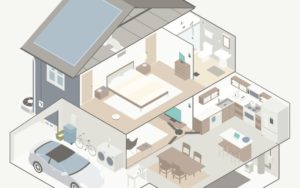
When you come home at the end of the day, you just want to relax. But maintaining a peaceful atmosphere goes far beyond simply putting your feet up. That's why we created a room-by-room home safety guide to help you keep small problems from turning into big household safety hazards.
Ready to take a virtual walk through your home to see where you can improve safety? Let’s get to it.

The average American spends almost eight hours sleeping every day. Since you spend so much time in your room, you should make sure it’s safe and sound.
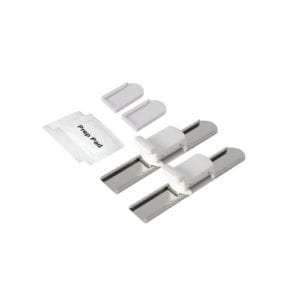
According to the U.S. Consumer Product Safety Commission, about 3,300 kids under the age of five are hospitalized every year for falls out of windows. 1 Unintentional falls are a number one cause of non-fatal injuries for kids under 15. 2
Even if you have screens in your windows, they’re not meant to bear the weight of children—or even pets. To prevent your child from falling out of an open window, check out our comprehensive buyer’s guide to window locks.
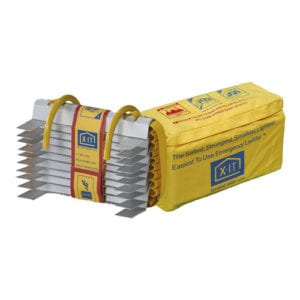
We spend one third of the day asleep in our bedrooms, so you have a 33% chance of being there when a fire breaks out.
If you’re on the ground floor, you can escape through a window, but if you need to climb down from a second or third-story bedroom, a fire escape ladder can save the day.
Make a fire plan and evacuation route to prep for emergencies like these.
Most folks keep jewelry, heirlooms, and other valuables in the bedroom. Instead of stashing cash and expensive baubles under the mattress, bring home a safe to keep your prized possessions secure. See our top home safe picks.
What about a panic room?Panic rooms may seem extreme, but our in-house expert, Rebecca Edwards, was among those consulted about ways to fortify your home security—including emergency planning and how to put together a panic room.
Hallways get us from Point A to Point B, but they can do much more for home security and household safety. Here are some safety measures to consider in your hallways:
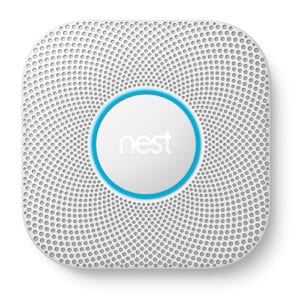
Fires are scary—and deadly. The National Fire Protection Association reported that 2,720 people died in structure fires in 2018 with 57% coming from lack of smoke alarms. 3,4
Smoke alarms are essential for detecting smoldering and blazing fires. They can mean the difference between life and death. Hallways are an ideal place to install smoke detectors, and you should place one in every bedroom and on every floor of your home.
There are plenty of models to choose from. We found the best smoke detectors to help keep you, your family, your pets, and your home safe.
Carbon monoxide is an odorless, poisonous gas that’s produced when you burn coal, wood, charcoal, oil, kerosene, propane, and natural gas.
While it occurs naturally in our environment, carbon monoxide becomes deadly in confined spaces. That’s why you should never leave a car running inside of the garage.
Without proper ventilation, carbon monoxide can build to toxic levels, causing illness or worse.
Carbon monoxide detectors can save your life. Install one on every floor in your home—including the basement and garage.
What is carbon monoxide?Check out our guide on the dangers of carbon monoxide and learn how to protect yourself and family from its effects.
Keep kids and pets out of harm’s way—and out of rooms that are off-limits—by installing gates. Take a peek at your baby gate options—we found gates that blend with your home's design, span large spaces, and protect kids and animals from falling down stairs.
The kitchen is the heart of the home. Who doesn't love smelling freshly baked bread or sneaking a spoonful of cookie dough?
But all the yummy smells and tastes need things like sharp knives, hot surfaces, heavy appliances, and breakables to make them (as much as we'd like to wave a wand and see fettuccine alfredo appear in front of us). Consider the following to make your kitchen safer:
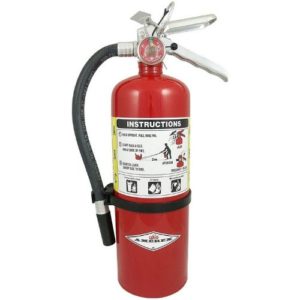
Even the best cook can have flare-ups; the U.S. Fire Administration says that cooking accounted for 50.7% of all house fires in 2018. 5
Whether you leave something on the stove too long, a curtain comes too close to the toaster, or a grease fire spirals out of control, it’s smart to have a fire extinguisher on-hand.
Not all fire extinguishers mesh well with kitchen fires (only some have dry components to combat grease), so check out our fire extinguisher guide to find the best option for your kitchen.
Keeping pot handles turned in toward the stove, sharp knives stored properly, and flammable objects away from hot surfaces are all good ways to stay safe in the kitchen.
Cooking with kidsIf you’re cooking with kids, help them learn about food and cooking safety. This will make it easier to maintain the wellbeing of your tiny sous-chefs. Check out our kitchen safety tips for kids.
Kitchen cabinets are full of chemicals that can poison and hinges that can pinch. To prevent kids from getting hurt in the kitchen, use a baby gate to keep them out (or install door and drawer locks) so your kids can’t get into anything harmful.
We all love our furry children! Keep an eye on yours when you’re away or at work with a smart pet cam. Some allow you to speak to your pet, release treats, or ensure the dog or cat sitter is doing a good job.
Here are some of the best pet cams we’ve found that will help you keep a better eye on Fluffy.
The place where we clean ourselves up can be a danger zone. Lots of people visit emergency rooms every year due to injuries that happen in bathrooms—like burns, falls, and near-drowning.
Here are some ways to boost safety in the bathroom and keep it a haven:
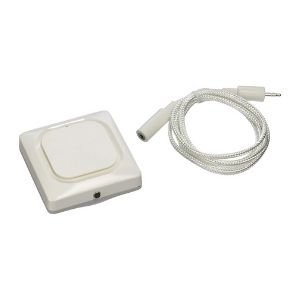
Bathrooms are the number one source of flooding because of toilets, sinks, and showers.
Catching a leaky pipe or massive burst before it becomes catastrophic will save you time, money, and a major headache.
That’s where flood sensors come into play. Most are equipped with smart technology, so you get an alert on your phone if it detects water.
Anyone is susceptible to slipping on wet surfaces, but elderly people are particularly vulnerable according to the CDC. 6 The fix? A good old bathmat.
Choose one that lays completely flat to avoid tripping and falling over an upturned edge. Also lay a slip-resistant pad on the shower floor to prevent falls. The more traction you can get in the bathroom, the better.
Scald guardOlder homes might not have the appropriate plumbing to control water temperature, meaning your faucets can become boiling water dispensers without warning. Keep kids and yourself burn free by installing scald guards on all of your home’s sinks and tubs.
Your child's bathtime is for splashing, playing, and getting squeaky clean, but it should never be done without supervision. Children can drown in a matter of minutes in as little as two inches of standing water.
So if you’re filling up the tub or letting it drain, stay in the bathroom until it’s empty.
Toilet safetyIf you have little ones, always keep the toilet seat down and secure with a toilet seat lock. They can fall in and drown if they’re small enough. Plus, a toilet is full of icky germs you definitely don’t want them touching.
Black mold isn't as lethal as past media hype has claimed, but its mycotoxins (naturally produced fungi) can harm those with respiratory allergies, asthma, or immune suppression.
Like all molds, black mold likes to grow in wet, warm places like the bathroom and basement. Use our guide to black mold to learn more about preventing, detecting, and remediating it.
The average American household does multiple loads of laundry per week. Since we spend so much time in the laundry room, make it a safe environment by paying close attention to these hazards:
According to the US Fire Administration, failure to clean dryers is the leading cause of fires involving this common appliance. 7 That’s because dryers collect lint, and lots of it.
To avoid a dryer and house fire, clean your dryer lint from the trap after every use. If you're in the "cleaning out the lint trap is therapeutic" club (we are), this shouldn't be a problem for you.
Also inspect the dryer vent for excess lint once a month. The cleaner your dryer is, the less likely it will kindle for a blaze.
Your washer's water supply and drainage pipe can dump tons of water on your floor if something goes wrong during a wash cycle. Even a small amount of water can damage your home.
Get in the habit of checking your water hook-ups monthly so you can avoid a flood worthy of an ark. Also, look into smart washers and dryers that you can monitor from your phone, so you’ll know right away if there’s a problem.
Gas hook-upsIf you have a gas dryer, check and double-check the hook-ups. Gas leaks can cause explosions and fires in your home if they accumulate to highly concentrated levels.
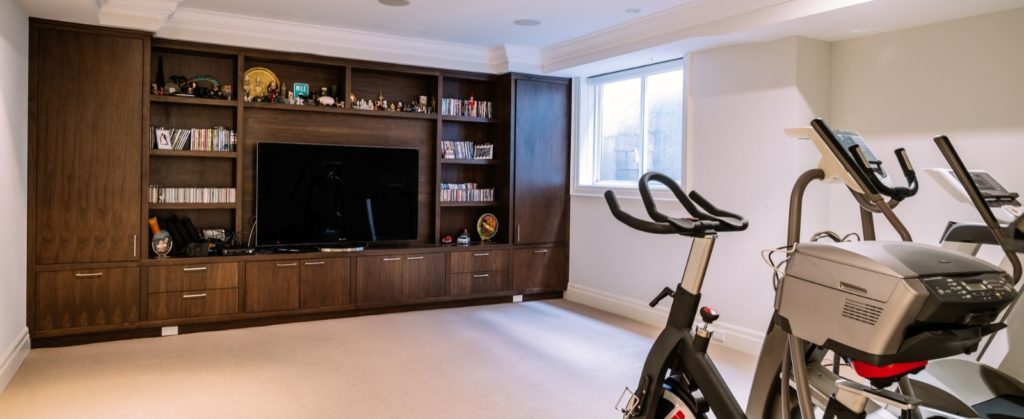
Whether your basement is a livable space or rough around the edges, keep the following in mind overall household safety.
Basements are magnets for moisture and flooding. Whether a pipe bursts, a storm rolls through, or a sump pump fails, your basement can become pretty soggy, pretty quick.
There are some great flood prevention measures you can use to stop flooding from happening in the first place. You can also use a water leak sensor to spot leaks before they get out of hand.
In the unfortunate event that your house floods, you can use some DIY flood remediation procedures to help bail you out until flood specialists arrive.
Find out if you're in a flood zoneIf you’re moving into a new neighborhood, check if it's in a flood zone first. That way, you’ll know if you need to take extra steps to prevent your basement from turning into an indoor swimming pool, or if you need to buy flood insurance .
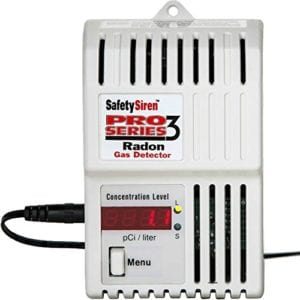
Radon is a radioactive gas that comes from the soil. The scary part about radon? It’s the second leading cause of lung cancer after smoking, 8 and it’s impossible to detect without equipment since it’s odorless and invisible.
You should definitely research radon levels in your area if you’re buying a home. The same goes for if you’re building so your developer can incorporate proper ventilation to keep radon out of your house.
Don’t fret if you already own your home. Consider buying a radon detector to test for radon. If levels are unsafe, you can hire a radon remediator to install the necessary ventilation gear.
Basements are a stockpiling station for our excess belongings. If you have shelving for storage, double-check weight limits so your stuff doesn’t come crashing down onto your kids, pets, or yourself.
Utility roomsAnything that burns fuel can emit carbon monoxide—including your furnace and hot water heater. This makes basements another important area to install carbon monoxide detectors.
Garages are home to our cars, lawn mowers, and—usually—lots of chemicals. Here’s what to watch out for and protect in your garage:
If you must keep hazardous materials (gasoline, car fluids, fertilizer, and outdoor cleaning products) on hand, store them on high shelves away from curious children and direct heat sources. Better yet, keep them in a secured shed away from the house.
It's also a good idea to find better alternatives to (and properly dispose of) these materials when you can. Check out the EPA's guide to household hazardous waste for more information.